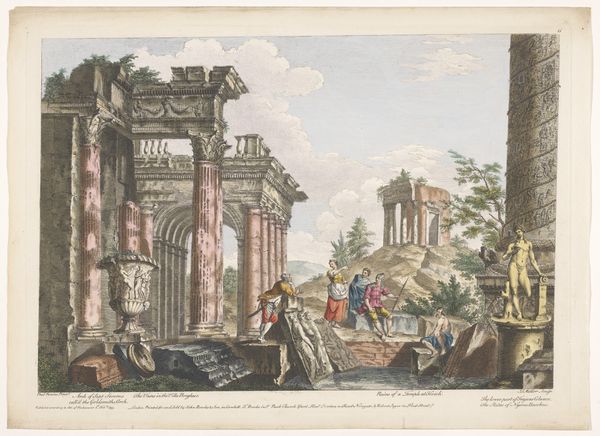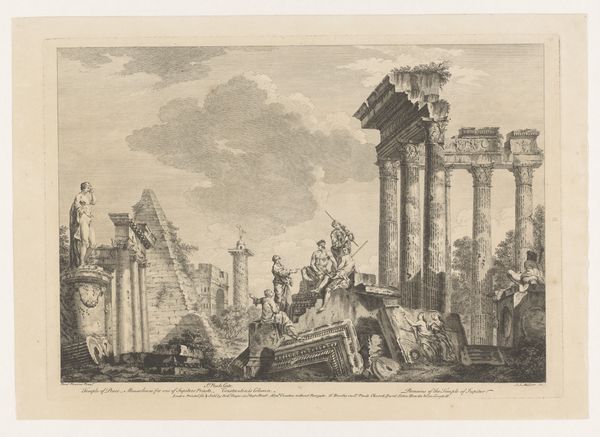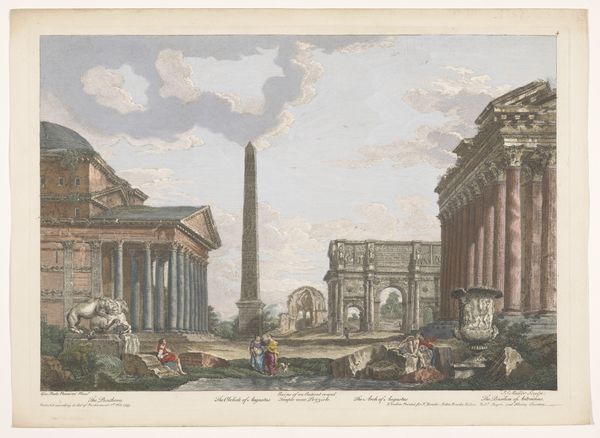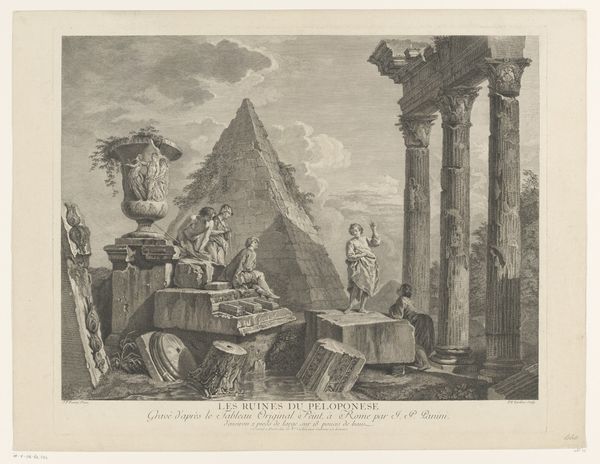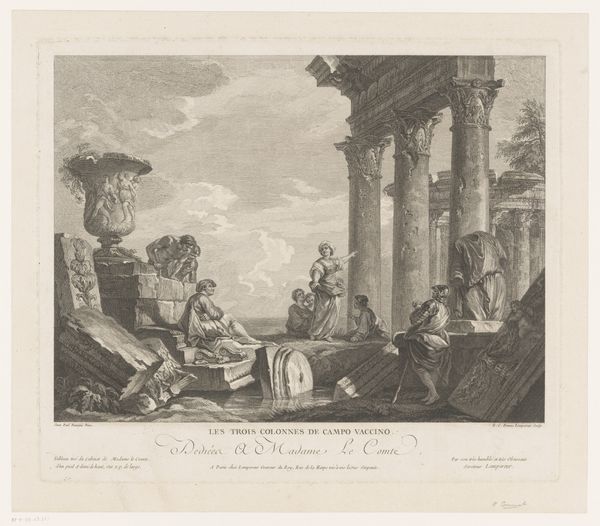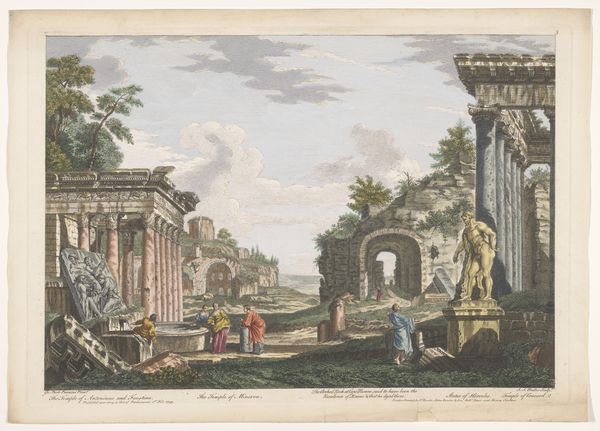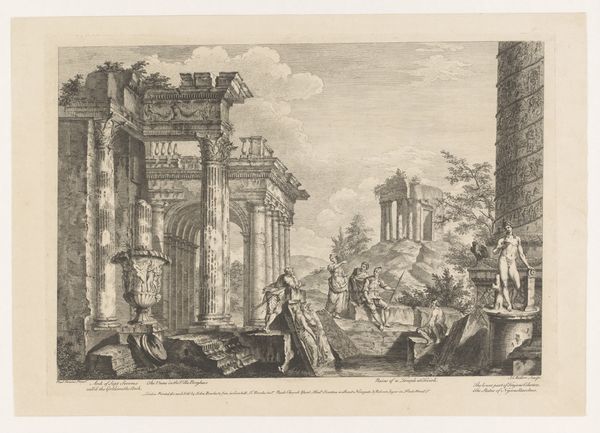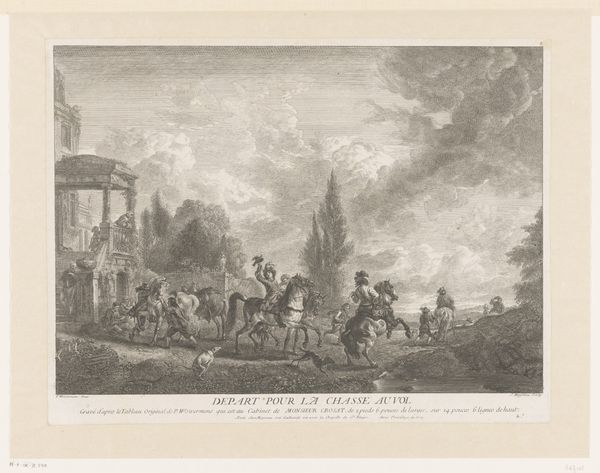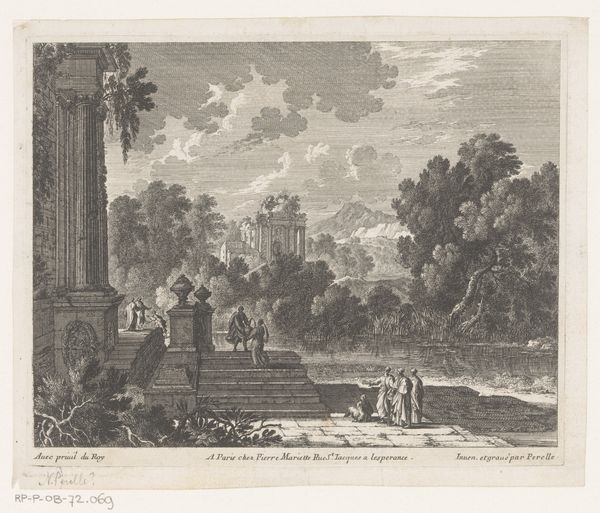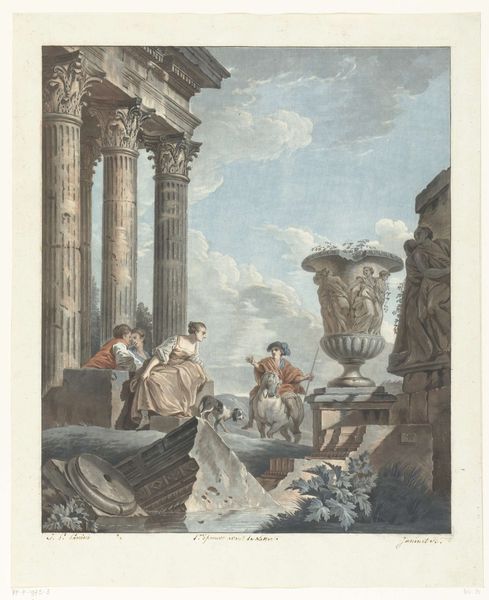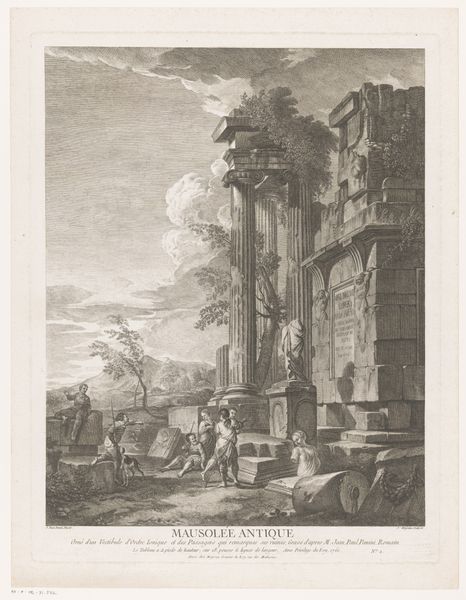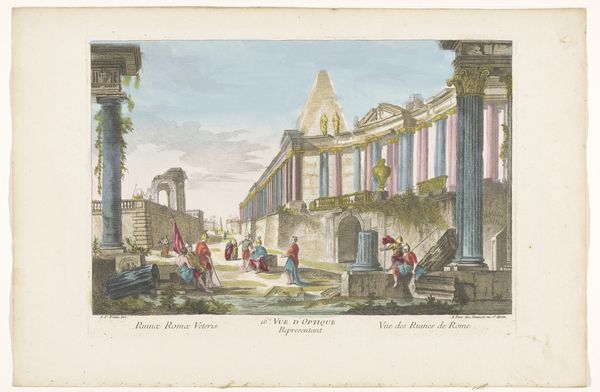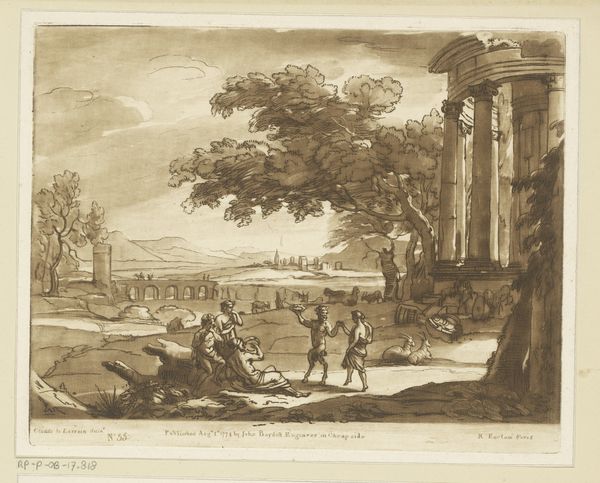
Gezicht op de ruïnes van de Piramide van Cestius, de Zuil van Constantijn en andere monumenten te Rome Possibly 1753
0:00
0:00
painting, watercolor
#
neoclacissism
#
water colours
#
painting
#
landscape
#
perspective
#
watercolor
#
coloured pencil
#
cityscape
#
history-painting
Dimensions: height 334 mm, width 478 mm
Copyright: Rijks Museum: Open Domain
Editor: We’re looking at Robert Sayer's, "View of the Ruins of the Pyramid of Cestius, the Column of Constantine, and other Monuments in Rome," possibly from 1753. It's watercolor on paper and housed in the Rijksmuseum. I find the overall scene a bit melancholic, almost staged in its ruin. How do you interpret this work? Curator: It's less about melancholy and more about how Rome, both its past and its contemporary image, was being marketed and consumed in the 18th century. Think of the Grand Tour, a rite of passage for wealthy Europeans. Paintings like these served as both souvenirs and visual records for the tourist eager to consume classical heritage. Editor: So it's about consumption rather than inherent sadness in the ruins themselves? Curator: Precisely. The arrangement is artificial, isn’t it? A curated collection of ruins positioned as though they were a scenic overlook. Also note the inclusion of the Pyramid of Cestius—an Egyptian structure amid Roman ruins. It suggests an accumulation of ancient wonders intended to impress. Editor: That’s true. I didn't think about how artificial it all appears; more like a theater backdrop. How was this art contributing to this political agenda of "consuming antiquity" during this time? Curator: Prints like these circulated widely, making Roman antiquity accessible. They weren’t just passively recording ruins; they were actively shaping how people *imagined* Roman power and history. These romanticized visions also masked a darker colonial reality that art played its role in sustaining. Do you think that changes the way we experience this art? Editor: Absolutely! Now I'm seeing not just ruins, but the echoes of a very specific historical viewpoint being actively promoted, carefully constructed, and, you are correct, available for consumption in different forms. Curator: And it’s through understanding that lens that we understand art's power to shape society then and even now.
Comments
No comments
Be the first to comment and join the conversation on the ultimate creative platform.
